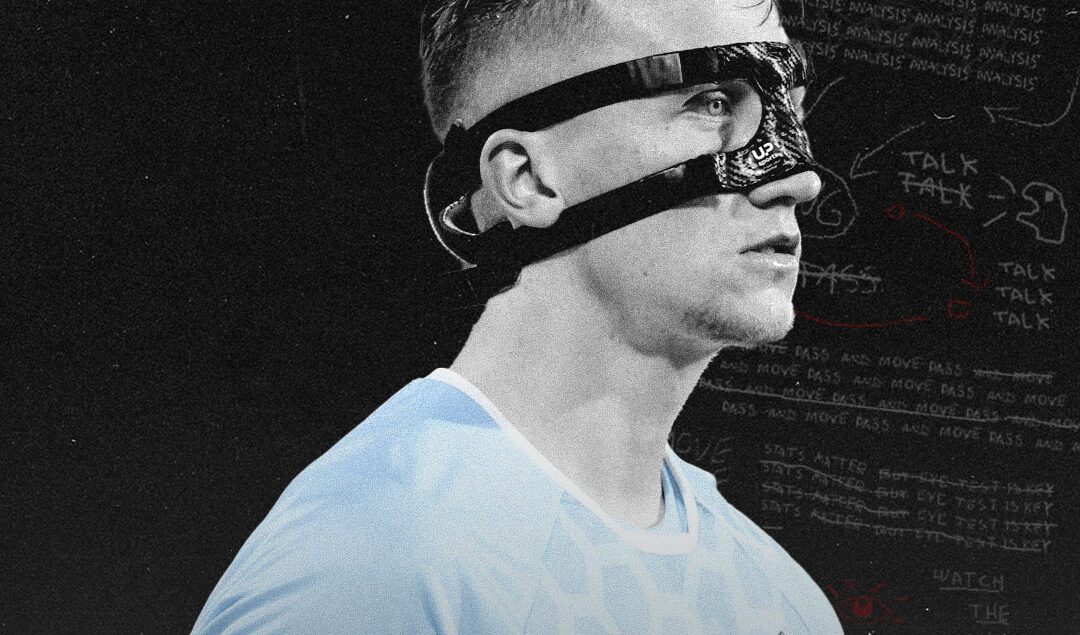The Evolution of Goalkeeper Analytics: Measuring the Last Line of Defense
The role of goalkeepers in football has evolved significantly, with advanced analytics redefining how we evaluate and train the position. Metrics like Post-Shot Expected Goals (PSxG), save percentage, and distribution accuracy are now crucial tools for understanding a goalkeeper’s contribution. These insights are not only shaping recruitment strategies but are also transforming the way goalkeepers are trained, allowing for more tailored and effective coaching methods.
Advanced Metrics in Goalkeeper Analysis
- Post-Shot Expected Goals (PSxG)
PSxG assesses the likelihood of a shot becoming a goal after it is taken, factoring in elements like shot placement, speed, and trajectory. This provides a clearer picture of a goalkeeper’s ability to prevent goals.
Case Study: José Sá (Wolverhampton Wanderers)
In the 2023/24 Premier League season, José Sá conceded 57 goals compared to an expected 66.45, meaning he saved 9.45 goals more than expected. This performance highlights his capacity to make extraordinary saves under challenging conditions.
Impact on Coaching:
PSxG helps goalkeeper coaches identify areas for improvement, such as reactions to shots from specific angles or distances. By analyzing this data, coaches can design drills to replicate these scenarios, enhancing a goalkeeper’s decision-making and reflexes.
- Save Percentage
This measures the proportion of on-target shots a goalkeeper successfully stops. While basic, save percentage becomes more insightful when combined with shot difficulty metrics.
Case Study: David de Gea (Fiorentina)
After joining Fiorentina, De Gea posted a save percentage of 76%, ranking among Europe’s best for the 2023/24 season. His improvement in stopping close-range shots is a testament to refined training based on data insights.
Impact on Coaching:
Save percentage data allows coaches to focus on specific shot scenarios where goalkeepers underperform. For instance, if a goalkeeper struggles with low-driven shots, coaches can focus on agility drills to improve their ability to get down quickly.
- Defensive Actions Outside the Box
Modern goalkeepers often act as sweepers, intercepting threats outside their penalty area.
Case Study: Manuel Neuer (Bayern Munich)
Neuer’s average of 1.5 defensive actions outside the box per 90 minutes in the Bundesliga demonstrates his ability to proactively manage high defensive lines.
Impact on Coaching:
Data on defensive actions helps coaches train goalkeepers in reading the game and improving their positioning. Neuer’s success has inspired drills that emphasize quick decision-making and effective communication with defenders.
- Distribution and Passing Accuracy
Goalkeepers are now playmakers, initiating attacks with precise passing.
Case Study: Ederson (Manchester City)
Ederson’s long-ball accuracy of 54% in the 2023/24 season has made him integral to Manchester City’s buildup play, often bypassing the opposition press.
Impact on Coaching:
Analyzing passing data enables coaches to improve a goalkeeper’s technical skills, such as accuracy under pressure. Training now includes practicing short passes in tight spaces and executing long balls under pressing situations.
Diogo Costa: The Present and Future of Portugal’s Goalkeeper Position
How Data Aligns with Modern Goalkeeper Training
Data plays a pivotal role in aligning advanced drills with the specific needs of goalkeepers. Here’s how it complements the innovative methods used in training:
- Footbonaut and Data Tracking
What Data Reveals: Ball-handling success rates, response times, and distribution accuracy.
How It Helps: Coaches analyze these metrics to adjust the speed, angle, and intensity of drills to target weaknesses.
- Augmented Reality (AR) and Scenario Simulation
What Data Reveals: Save percentages during simulated penalty scenarios and shot placements.
How It Helps: Coaches design AR scenarios that replicate a goalkeeper’s weak spots, ensuring tailored improvements.
- Small-Sided Games and Positioning Metrics
What Data Reveals: Positional heat maps and defensive actions per game.
How It Helps: Training intensity and drills are adapted to emphasize areas where goalkeepers lose positioning or fail to communicate effectively.
- BlazePod Reaction Drills and Reflex Analytics
What Data Reveals: Reaction times and movement efficiency during training.
How It Helps: Coaches identify patterns where reflexes slow under pressure and adjust BlazePod setups to simulate these high-pressure moments.
And Now, the Showdown: An In-Depth Exploration of Penalty Shootouts through a Psychological Lens
- Data-Driven Customization for Targeted Training
What Data Reveals: Trends in conceded goals (e.g., low-driven shots or aerial duels).
How It Helps: Goalkeepers focus on specific types of saves or distributions based on real-game weaknesses.
How Mike Maignan Became One of the Best Goalkeepers in Europe
By leveraging data, clubs can ensure that drills aren’t generic but instead address the goalkeeper’s unique strengths and areas for improvement, making training both efficient and effective.
Future of Goalkeeper Analytics in Coaching
- Wearable Technology:
Devices that track biomechanics, such as hand speed and reaction time, are being integrated into goalkeeper training. These tools allow coaches to analyze physical performance and develop drills to improve reflexes.
- AI Simulations:
AI-driven models can simulate game scenarios, helping goalkeepers practice rare but critical situations, such as one-on-ones or penalty saves.
How Mike Maignan Became One of the Best Goalkeepers in Europe
- Real-Time Feedback:
Training sessions equipped with data analytics provide instant feedback on performance, enabling goalkeepers to adjust and improve in real-time.
Conclusion
The advent of data analytics has revolutionized how goalkeepers are evaluated and trained. Metrics like PSxG, save percentage, and distribution accuracy not only offer a deeper understanding of their contributions but also empower coaches to develop more effective training programs. As analytics continues to advance, goalkeepers are poised to become even more influential, shaping the game from both the backline and the training ground.
This data-driven evolution ensures that goalkeepers receive the recognition and resources they deserve, solidifying their role as the last line of defense and the first line of attack.
By: Shawal Hossain / @Itadorinotyuji
Featured Image: @GabFoligno / Catherine Steenkeste / Getty Images
